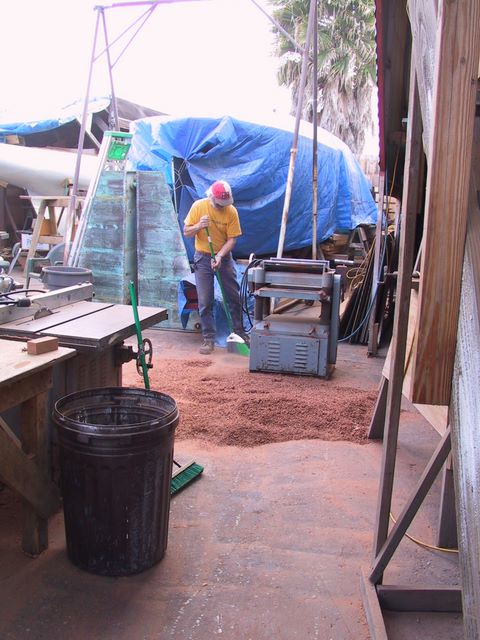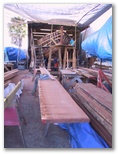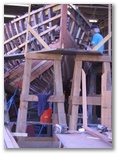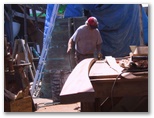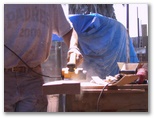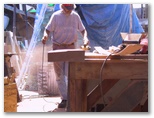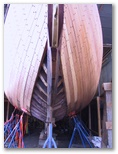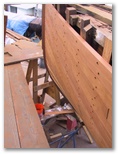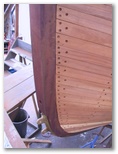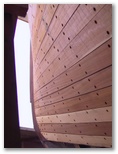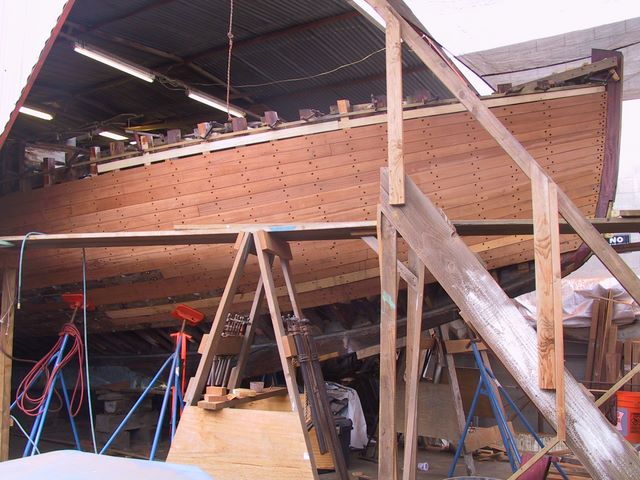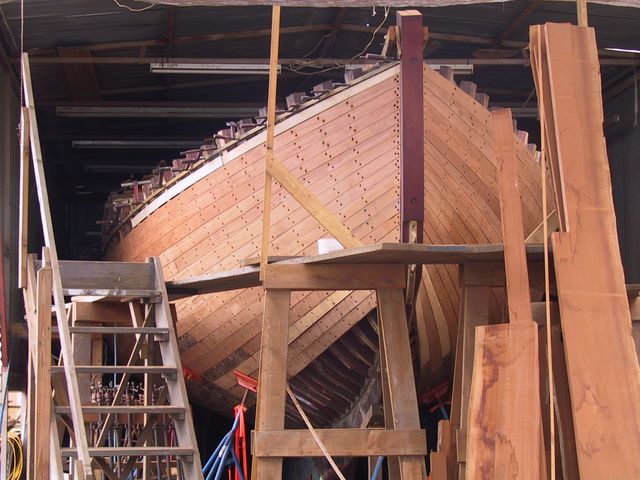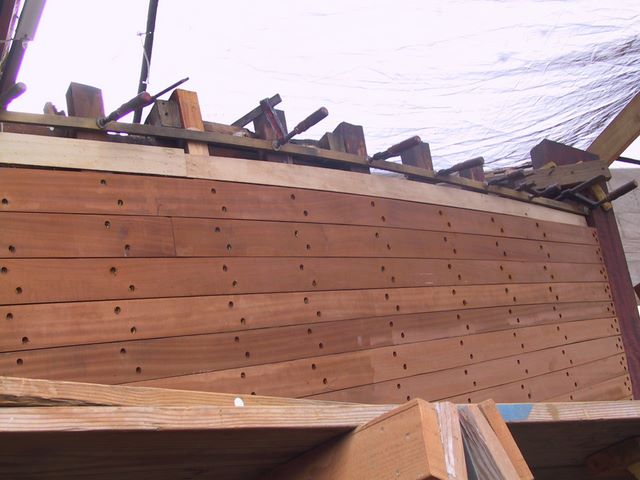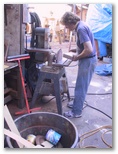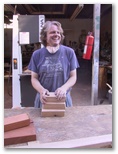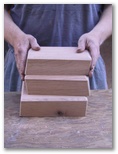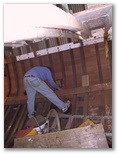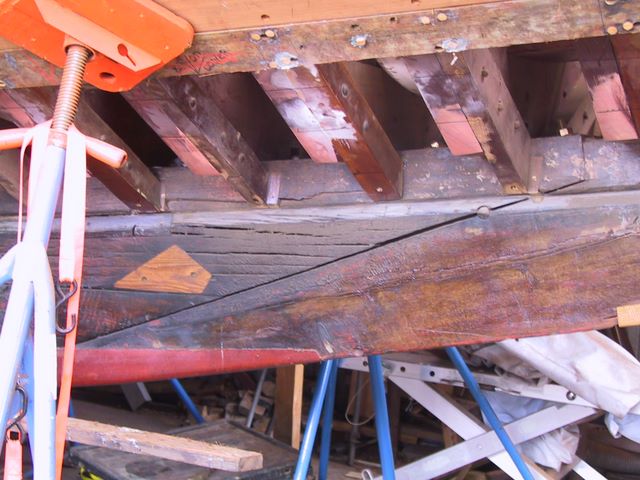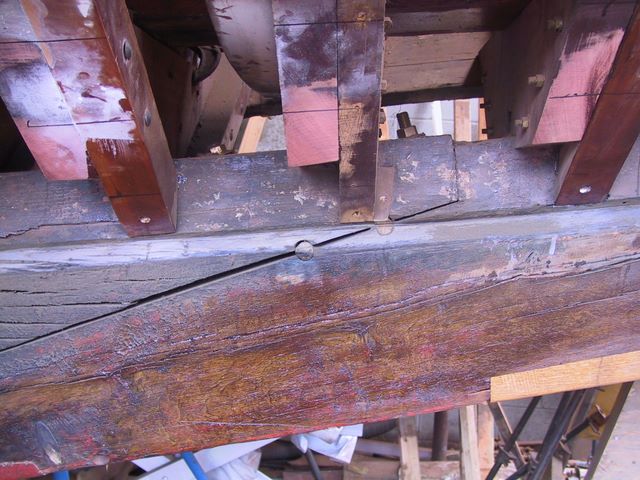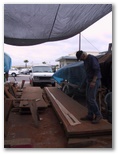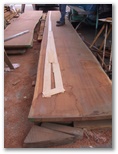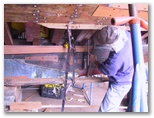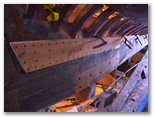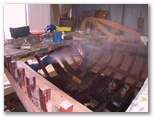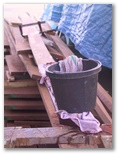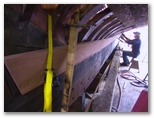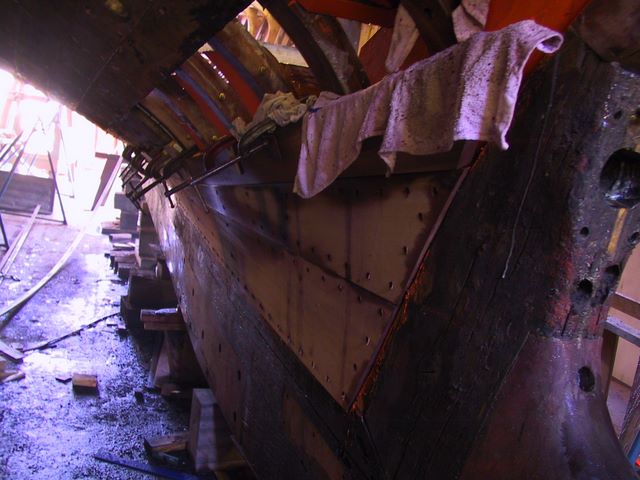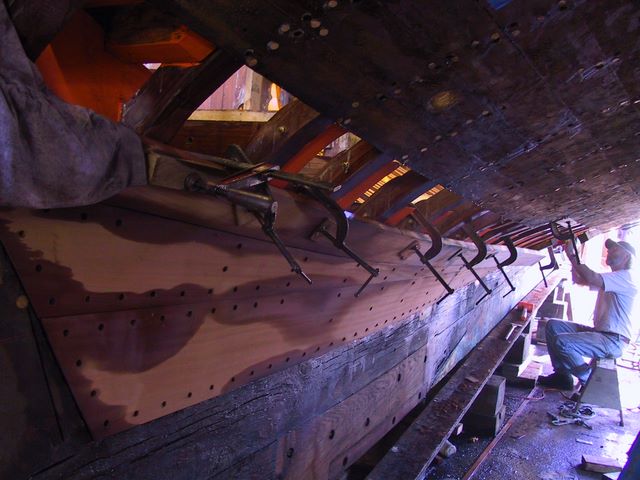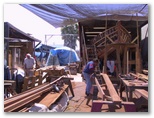 |
To the left are some pics of Mahdee's bow as she is planked up. In the second pic we can see the shearstrake is still off. It will remain off until the deck beams are completed; the right picture shows us the plank ends as they tie into the rabbet at the new purpleheart stem. It hasn't yet been shaped completely, though. The far right shows us the curve of her planks as they come into the stem on the port side |
|
|
|
|
Mahdee
is beginning to look much |
| Below, there are numerous small repairs to the forekeel. There is a new purpleheart wormshoe that overlaps the joint between the forekeel and the keel (left). The joint itself is interesting in that it shows us both an inner and outer stopwate. The inner one is located at the apex of the rabbet where expected. The outer one is located right at the outside edge of the rabbet. Bud Mackintosh mentions these outer stopwaters as a typical "Sam Crocker" detail of construction. The rabbet is cleaned up and new stopwaters installed as part of the planking project. The ends of the floors have been faired into the line of the planking--the new wood is bright pink. The rest of the wood is darker because of the "boat sauce" mixture of pine tar, boiled linseed oil, and turpentine that is painted onto it to keep it from drying out. | |
Back
to Schooner Mahdee Planking
Click a picture to see a larger view.
